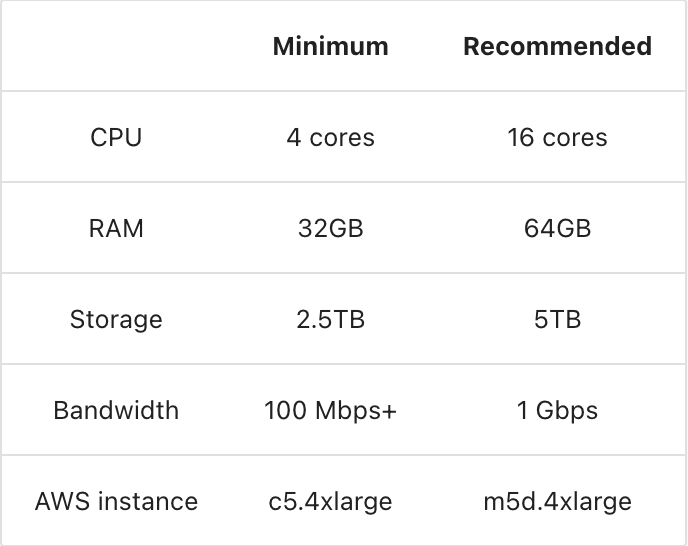The Polygon Network showcases a sophisticated architectural framework structured to bolster blockchain efficiency and interoperability. It consists of three pivotal layers, each contributing uniquely to the network’s robust ecosystem: the Ethereum layer, the Heimdall layer, and the Bor layer.
Architecture Layers Detailed
- Ethereum Layer: The foundational layer comprising a set of smart contracts on the Ethereum mainnet. These contracts are crucial for integrating the Polygon network with Ethereum, enabling critical transactions and interactions within the Polygon framework.
- Heimdall Layer: This layer features a set of proof-of-stake nodes running on Tendermint, monitoring staking contracts on the Ethereum mainnet and committing Polygon Network checkpoints back to Ethereum. Heimdall plays a crucial role in the network's security and validation processes, handling the aggregation of blocks from the Bor layer into a Merkle tree and periodically publishing the Merkle root to Ethereum.
- Bor Layer: Bor is responsible for producing blocks on Polygon’s sidechain. It operates based on principles from Go Ethereum and the Clique consensus protocol, involving a selection of block producers through a democratic and periodically shuffled system by Heimdall validators.
Operational Dynamics of Bor and Heimdall
Bor
Bor nodes aggregate transactions into blocks. Validators chosen based on their stake in the network use historical Ethereum block data to shuffle the validator array, ensuring a fair selection process for block producers.
Each sprint within a span involves a single block producer generating blocks. Sprints and spans help define the duties and rotation of block producers, providing structure and predictability to block production.
Block producers, a subset of validators, are periodically selected and are responsible for creating blocks and ensuring their broadcast across the network.
Bor’s consensus involves a rotating committee of block producers selected based on their stake. This process ensures a fair and secure method of block production within the network.
Heimdall
The primary role of Heimdall nodes is to validate blocks created by Bor and to manage the compilation and publication of these blocks as Merkle trees to the Ethereum blockchain.
Heimdall nodes publish checkpoints to the Ethereum mainnet, providing finality and a proof of burn for asset withdrawals. These checkpoints are critical for maintaining the integrity and continuity of the Polygon network.
Heimdall’s Core Functions are the selection of block producers, the state synchronization between Ethereum and Polygon, and other essential aspects using a customized version of the Cosmos-SDK and a forked version of Tendermint called Peppermint.
Validators on Heimdall confirm blocks up to the latest checkpoint, assemble a Merkle tree of these block hashes, and publish the resultant Merkle root to the Ethereum mainnet.
Node Types
Full Nodes:
These nodes fully validate transactions and blocks. They come in two forms: pruned full nodes, which discard unnecessary data to remain lightweight, and archival full nodes, which maintain a complete historical record of the blockchain.
Bor Nodes:
Essential for aggregating transactions into blocks, which are then processed by Heimdall nodes.
Heimdall Nodes:
Validate all blocks since the last checkpoint and manage the crucial task of checkpoint publication.
Sentry Nodes:
Provide a protective layer for validator nodes, shielding them from potential threats and ensuring stable network operations.
Validator Nodes:
Active participants in the network that validate transactions, produce blocks, and help govern the network's operation.
This multi-layered architecture not only enhances the scalability and security of the Polygon Network but also ensures its seamless interoperability with Ethereum, reflecting Polygon's commitment to pushing the boundaries of blockchain technology.
Run a Validator Node
System requirements
For effective operation of a Polygon full node, it is essential to equip the setup with sufficient computational power and memory. The recommended configuration includes:
- CPU: At least 4 CPUs or cores, which ensures adequate processing power for the node's operations.
- RAM: A minimum of 16 GB of RAM is required to smoothly handle the node's tasks without performance bottlenecks.
- 2.5 TB to 5 TB of fast storage
- Use a public IP and open ports 30303 and 26656

You can find more info about the setup here:
Using Docker - Polygon Knowledge Layer
The Polygon team distributes official Docker images which can be used to run nodes on the Polygon Mainnet. These instructions are for running a Full Node, but they can be adapted for running sentry nodes and validators as well.
https://docs.polygon.technology/pos/how-to/full-node/full-node-docker/
